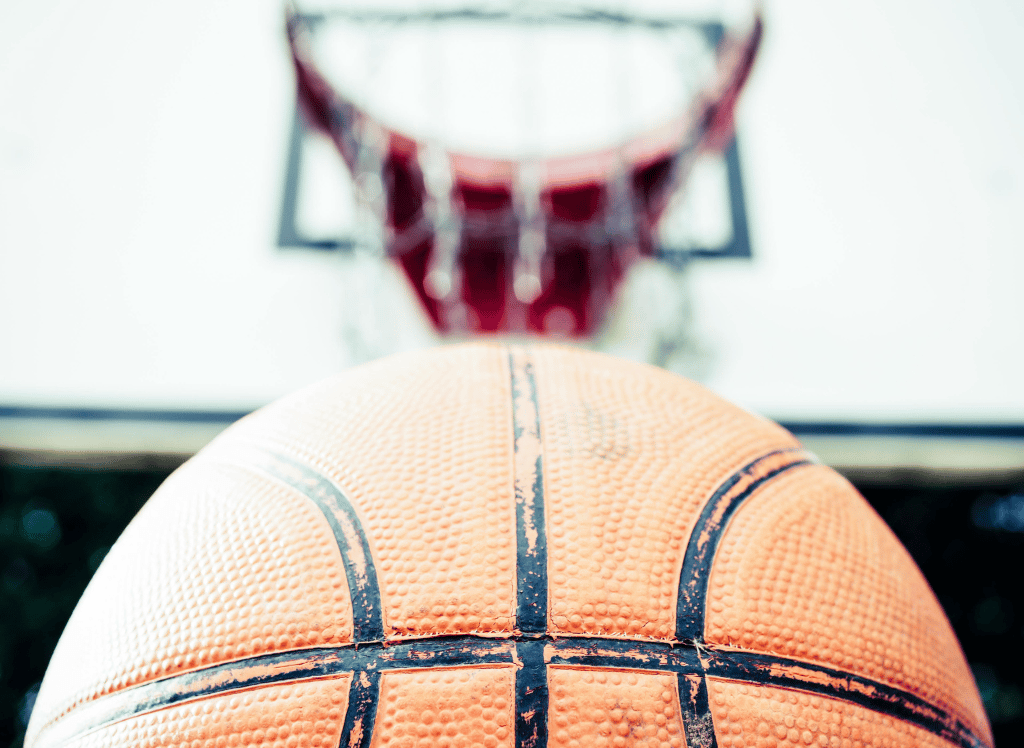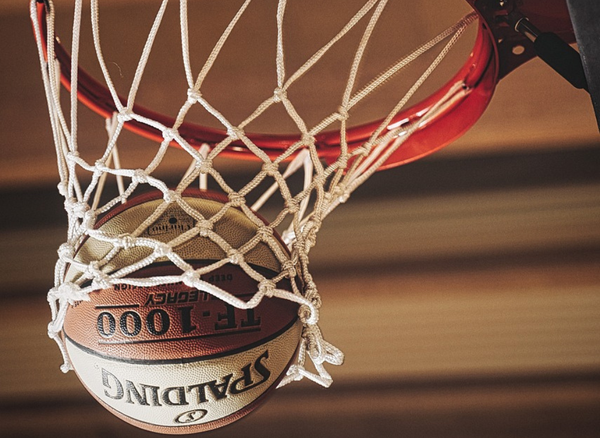In the fast-paced, action-packed game of basketball, every play counts. While slam dunks and three-pointers often steal the spotlight, there’s a critical aspect of the game that often goes underappreciated. So what is an assist in basketball?
Assists play a crucial role in team success and individual player recognition. We’ll delve into basketball assists, exploring what it is, notable records, controversies, and tips for improving your own assists.
What is an Assist in Basketball?
The NBA considers a successful pass to a teammate that leads to a basket as an assist. This must be the last pass in the sequence for it to count. An assist or a dime in basketball may involve an inbound pass leading to a perimeter jump shot or three-point shot. Another example may be a quick pass for a layup, or even an alley-oop or long toss-up leading to a dunk..
Accurate scoring calls for the recording of assists, ensuring each player’s efforts on the court, including those with the most career assists in NBA history, are duly recognized. The assist is not only a testament to a player’s passing ability but also their awareness and unselfishness in contributing to the team’s success.
A basketball assist is a pass made by one player to another which leads directly to a successful field goal, but it does not include free throws. An assist is only credited when the recipient’s shot goes in immediately.
In terms of statistics, an assist occurs when the passer accurately finds a teammate in a scoring position, and that teammate converts the basket with no significant contribution from anyone else on the court. This means that if two offensive players are involved in setting up a basket, only one can be credited with an assist - given to whoever provides the final pass leading to successful delivery of the ball into the hoop.
Assists are awarded whether making a direct pass into the post or throwing an alley-oop lob from outside for an easy dunk/layup. The point guard will often have many assists as these passes come naturally within running their offense as they'll move around and use screens set by their big men teammates before making quick decisions on who should receive what kick out passes or off-ball cuts etc.. However, sometimes other off guards or even shooting forwards can show great creativity while distributing too - so there's definitely opportunity across different positions here.
But it's important to note that free throws don't count towards assists since they're considered "unassisted shots". That being said - although assists won't count towards those situations where you draw contact at close range and then convert two points unassisted from charity stripe... still having your team rely on you offensively for such scenarios can certainly merit recognition amongst stat sheets.
Factors Affecting the Crediting of Assists
When it comes to crediting assists, factors such as dribbling, reaction time, and referee decisions can impact whether a play is recognized as an assist or not. For instance, the scoring player must make two dribbles or less before scoring a field goal for the pass to be credited as an assist.
The decision of whether a play qualifies as an assist largely rests on the referees. In the event of a question as to whether an assist was made, officials will review available video replay evidence, including any pressure applied by the opposing defense, to evaluate its validity. The subjective nature of assist attribution can lead to debates and controversies, as discussed in the next section.
The Role of Different Positions in Assists
While point guards typically accumulate the most assists due to their ball-handling responsibilities, other positions can also contribute significantly to assist totals. In basketball, the primary responsibility of a point guard is to manage the ball-handling duties.
Post players, for example, can gain assists by receiving the ball in the high post area and then passing or distributing it to teammates who can then efficiently score points close to the basket or near the perimeter of the court. Essentially, every position on the court can contribute to the team’s assist totals, highlighting the importance of teamwork and selfless play in basketball.
Notable Assist Records and Milestones
Throughout NBA history, several legends have achieved remarkable milestones in assists. Career, single-season, and single-game records are held by esteemed players like John Stockton, Magic Johnson. John Stockton holds the record for career assists in the NBA, showcasing his exceptional playmaking ability.
The Milwaukee Bucks hold the single-game assist record, registering 53 assists during a game against the Detroit Pistons in 1978. These records and milestones highlight the significance of assists in basketball and the impact they have on both team success and individual player recognition.
Controversies and Debates Surrounding Assists
The subjective nature of crediting assists in basketball has sparked debates. Variations in interpretation of what constitutes an assist by different scorekeepers can result in inconsistencies in how assists are credited, leading to conversations about the accuracy and fairness of assist statistics in assessing a player’s passing ability.
Another area of contention is self-alley-oops and the impact of extensive dribbling on assist recognition. If a player passes the ball to themselves off the backboard and then scores, should it count as an assist, or is it just a creative way to score? These controversies highlight the complex nature of assists in basketball and the ongoing discussions surrounding their interpretation.
Impact of Assists on Team Performance and Individual Success
Assists have a significant impact on team performance by promoting ball movement and efficient scoring. A positive correlation has been observed between a basketball team’s assist rate and their win rate, with teams that have a higher assist rate generally achieving a higher win rate. This emphasizes the importance of teamwork and unselfish play in achieving success on the court.
Additionally, assists contribute to individual player success and recognition. They are a reliable measure of a player’s capability to create scoring opportunities for their teammates and are taken into account in various advanced offensive metrics, which can help differentiate between winning and losing teams. Furthermore, a high assist rate can positively impact a basketball player’s market value, as it demonstrates their playmaking skills and basketball IQ.
Tips for Improving Your Assist Game
Boosting your assist game requires honing your court vision, accurate passing, and establishing effective communication with teammates. Drills such as:
- Partner passing
- Chest passes
- Bounce passes
- Push passes
- Overhead passes
can be employed to improve accurate passing. By honing your passing skills, you’ll be better equipped to create scoring opportunities for your teammates and contribute to your team’s overall success.
Communication with teammates is vital in basketball, both on and off the court. Verbal cues and phrases like ‘screen left’ or ‘I’ve got your help’ can be used to strengthen communication with teammates. Additionally, non-verbal communication, including eye contact and physical gestures like touching and pointing, can also be employed to enhance communication on the court.
An array of strategies can be employed to create assist opportunities, such as:
- Keeping your eyes up
- Making the appropriate type of pass
- Utilizing the ‘drive and kick’ technique
- Creating space
- Understanding your positional role
- Developing mental toughness and leadership skills
By mastering these techniques and strategies, you’ll be well on your way to becoming a playmaking maestro on the basketball court.
Frequently Asked Questions
We hope our Frequently Asked Questions section is packed with information, ensuring you have all the tools necessary to elevate your game. Browse around, expand your knowledge, and unlock your full potential as a passer.
What is considered an assist in basketball?
An assist in basketball is when a player throws a pass leading directly to a field goal, or when an inbound pass leads to a field goal. Assists are credited to the passer only if the player scoring the basket has an immediate reaction toward the basket after receiving the pass.
How many dribbles is an assist?
An assist is usually awarded when the scoring player only had two or fewer dribbles before scoring.
Does an airball count as an assist?
No, an airball typically does not count as an assist according to official scorers.
What factors can affect whether a play is credited as an assist or not?
Dribbling ability, reaction time, and referee decisions can all play a role in determining if a player's pass is credited as an assist or not.
Summary
Assists are the unsung heroes of basketball, playing a crucial role in team success and individual player recognition. So, the next time you hit the court, remember that every pass counts and strive to elevate your assist game.









